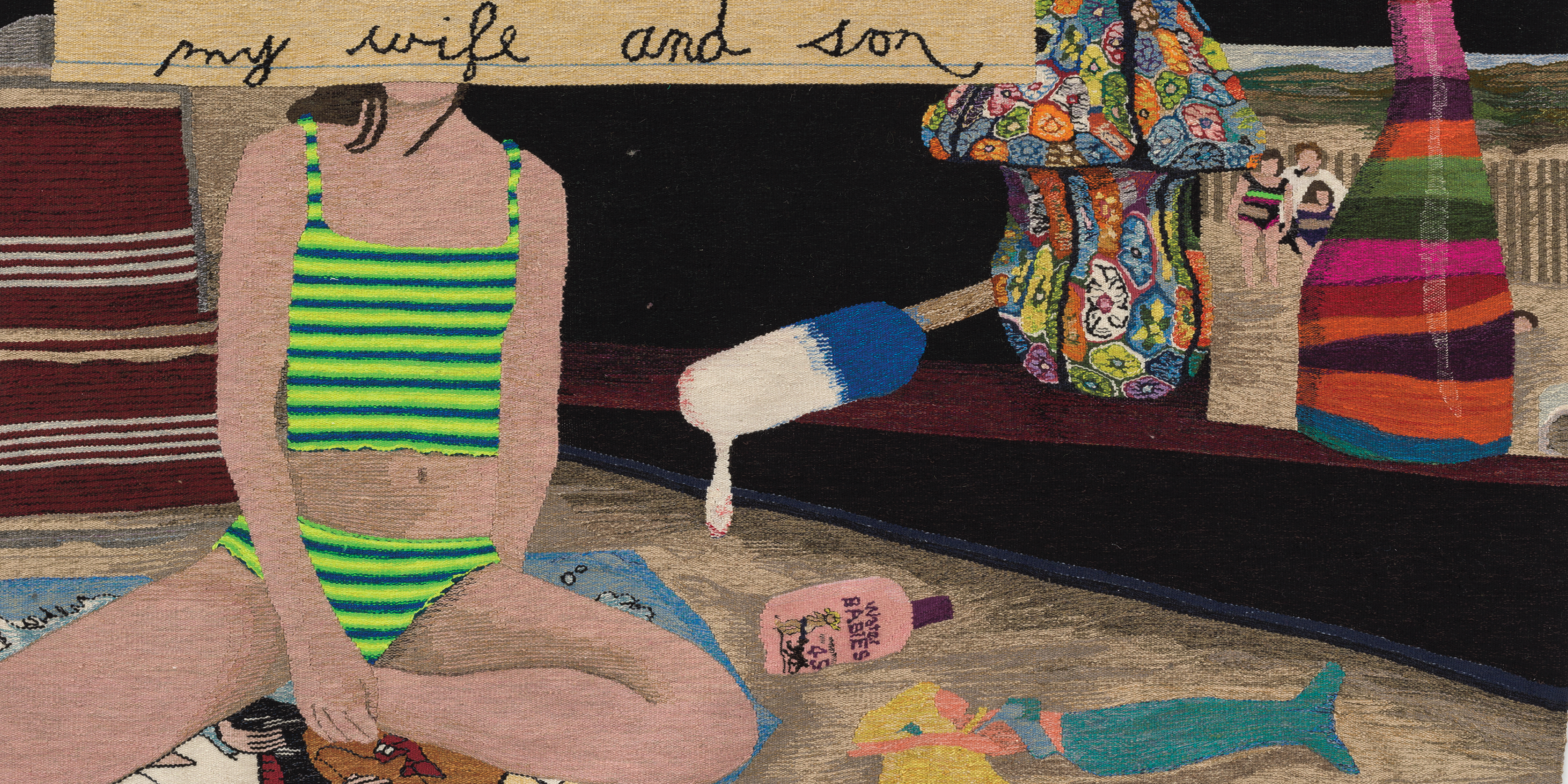“Sexuality is reflective of the ways in which people relate to each other, where they place care, where they’re selfish, where they dehumanize.” Mission’s interview with Erin M. Riley.
Brooklyn-based tapestry artist Erin M. Riley has been weaving pieces that speak on issues faced by women for over ten years. Her work addresses dark themes, raising awareness and promoting recovery for those who have faced issues including violence, self-harm, objectification, or are struggling with their sexuality. Many of her tapestries are based on personal experience, imagery that she has plucked directly from her camera roll, or photos she has come across online.
Below, Erin M. Riley opens up about her creative process, the endurance of weaving, and how her work mirrors the imagery of her life.
Lizzy Zarrello: What made you want to become an artist?
Erin M. Riley: I’ve never wanted anything more than to keep trudging along in a way that made the least negative impact on other people and allowed me to have a mind that could be quieted and a body that would be kept in motion. Being an artist happened to me as I found the place where I felt simultaneously safe and challenged.
LZ: What drew you to tapestry over other forms of art?
ER: There is a level of endurance to weaving. After I’ve done the planning and setup, it requires hours of repetitive physical behaviors, sitting at a machine powering it with your legs and arms. But what to do with the mind? Tapestry weaving allows all of you to be engaged: making color choices, following the drawings beneath, preparing for the areas above all while pressing the pedals, and moving the shuttles. My mind is focused on the work and excited by the journey; tapestry is just how I create imagery; color is the fabric of the work.
LZ: What’s your technical process?
ER: The work is made using hand-dyed and manipulated yarn, taking yarn apart, and creating gradients. Preparing a palette before starting a painting is a huge part of my process so that when I’m actively weaving, I can pick and choose from colors quickly. I prepare a drawing or cartoon to the scale of the tapestry and affix it to the back of the piece depending on the loom so I can follow it along as I weave. My weaving is done by me in my studio in Brooklyn on looms older than me.
LZ: Where do you gather inspiration for your work?
ER: Life, for me, has been about recovery—before I knew what that word even was. As I saw behavioral patterns emerge within my family and cycles repeat themselves before my eyes, I decided that I would be vigilant in the path I chose to live life. I’d make decisions to be self-reflective and self-critical; I’d be honest about my flaws and the parts of myself that I held the greatest shame in. I’d try my very best to break the codependence that was interwoven into every relationship I had. This is what inspires me, seeing where I fail, seeing where I’m repeating the decisions that I once derided others for, seeing where I placed value where I saw lack. Much of my work is rooted in sexuality because I think sexuality reflects how people relate to each other, where they place care, where they’re selfish, where they dehumanize. People’s values around sexuality and how they arrive at it interplays with so many aspects of humanity. I’m constantly inspired and interested in uncovering more.
LZ: Do you source imagery or use your own photos when creating tapestries?
ER: I’m using imagery I source from the internet, images I have taken of myself, and objects in my space or memory. Existing online allows you to be multifaceted and think about a lot of things all at once. For me, these seemingly abstract connections are important to show someone’s mental and physical space.
LZ: How do your pieces tackle women’s issues and female sexuality?
ER: My work is a study of my existence; therefore, it reflects a certain subset of women’s issues and female sexuality. Gender is not something I’m very invested in, but I appear female and struggle with issues that affect women. There are layers to these topics, as they’re being talked about in the greater world and within my community. I’m making work about topics that I find relevant and important.
LZ: Why do you find it important to tackle these subjects?
ER: Many of the things that my work covers—menstruation, birth control, sexuality, masturbation, self-harm, domestic violence—should be talked about without shame, and yet society has not moved the needle. I find myself working through them, finding them easily digestible, and divesting from the shame. Then something happens in larger society to remind me that my progress is not everyone else’s. We must discuss these topics until people stop using them against people.
LZ: Many women in your tapestries are faceless. Why is this?
ER: In my relationships, I often feel a level of disassociation that removes me from the body I inhabit; I also participate in a level of self-objectification. Therefore, I often view myself not as me but as body. I think how we present ourselves in pictures has a level of separation from the person we actually are. Removing the faces allows for figures to be less specific.
LZ: What topics do you hope to explore in the future?
ER: My work is currently meandering through girlhood, childhood sexuality, family structures of denial, and how history is rewritten to benefit some.
Images courtesy of Erin M. Riley





